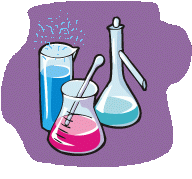


Description of experiment
Below follows a plain text transcript of the selected experiment.
![]()
Needed compounds:
-----------------
sodium hydroxide : NaOH
sodium bisulfite : NaHSO3
sulphuric acid : H2SO4
potassium dichromate : K2Cr2O7
thiourea : NH2 CS NH2
Class:
------
elem=Cr
coordination
redox
Summary:
--------
When potassium dichromate is reduced by thiourea in acidic environments, then
a moss-green compound of chromium (III) is formed. When already existing
chrome (III) is added to a solution with thiourea, then the moss-green
compound is not formed.
Description:
------------
Experiment 1:
--------------
Add an excess amount of a solution of thiourea to a solution of K2Cr2O7 in
dilute H2SO4 (1 mol/l): The liquid becomes moss-green. Usually, reduction
of dichromate results in bluish green or purple compounds, so this moss-
green compound probably is a coordination complex between thiourea (or an
oxidation product) with chrome (III).
Experiment 2:
--------------
Create an acidic chromium (III) solution from potassium dichromate, sodium
bisulfite (slightly excess amount) and sulphuric acid and drive off all excess
SO2 by boiling and leave liquid stand for several weeks. The resulting liquid
is purplish blue/green.
Add the purplish blue/green liquid to a solution of thiourea: No visible
changes.
Add some solid NaOH: The solid dissolves and the liquid heats up considerable
(excess heat, due to acid/base reaction). The color of the liquid changes
from purplish blue to green (the normal reaction for chromium (III) in
strongly basic solution).
![]()